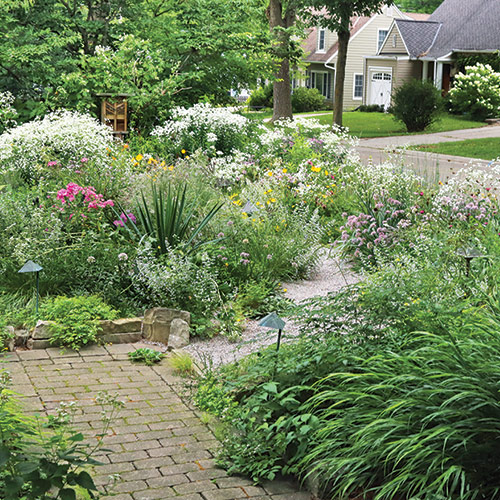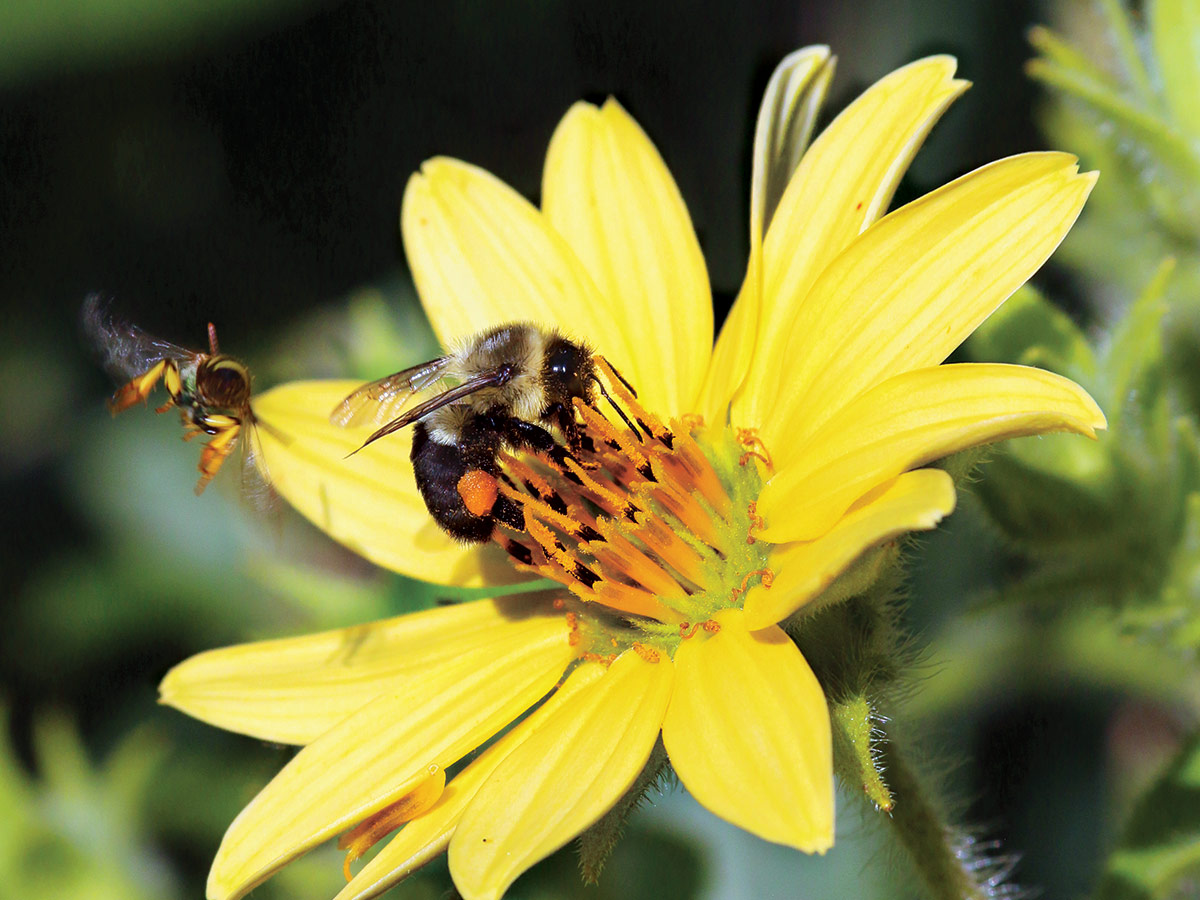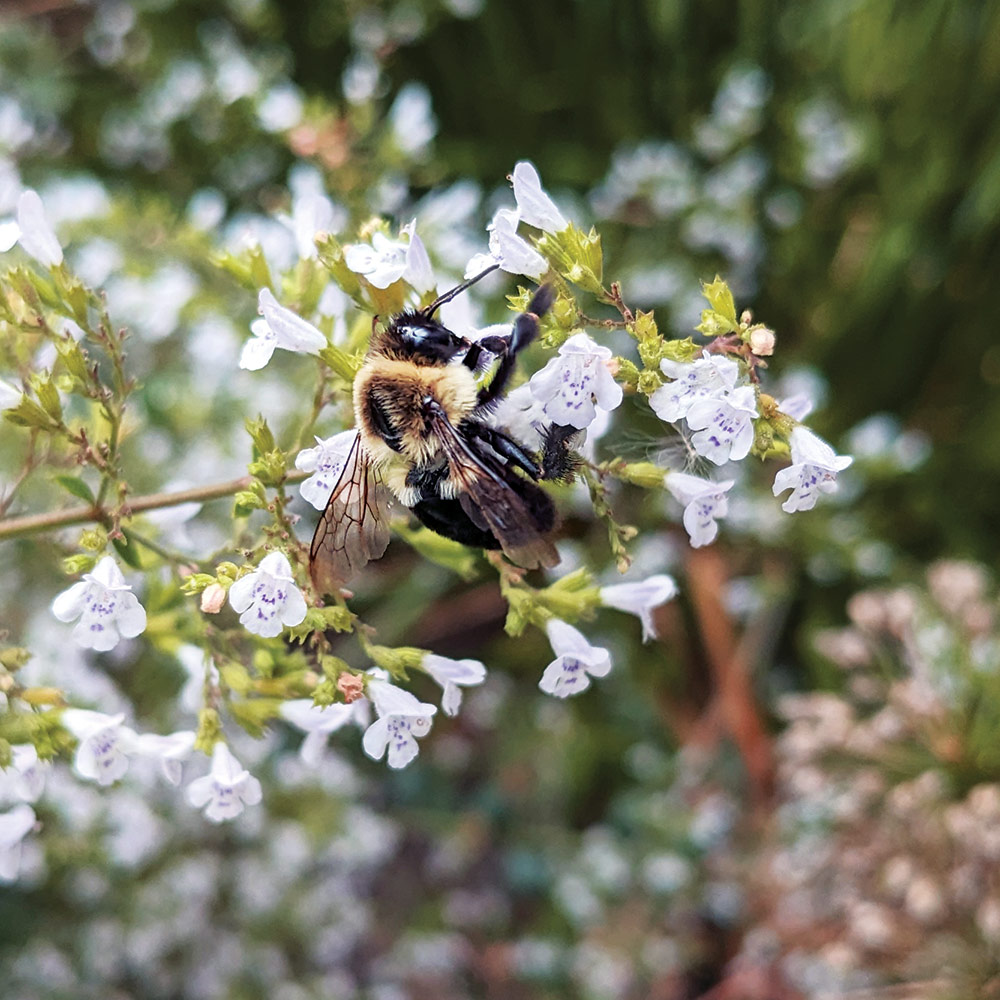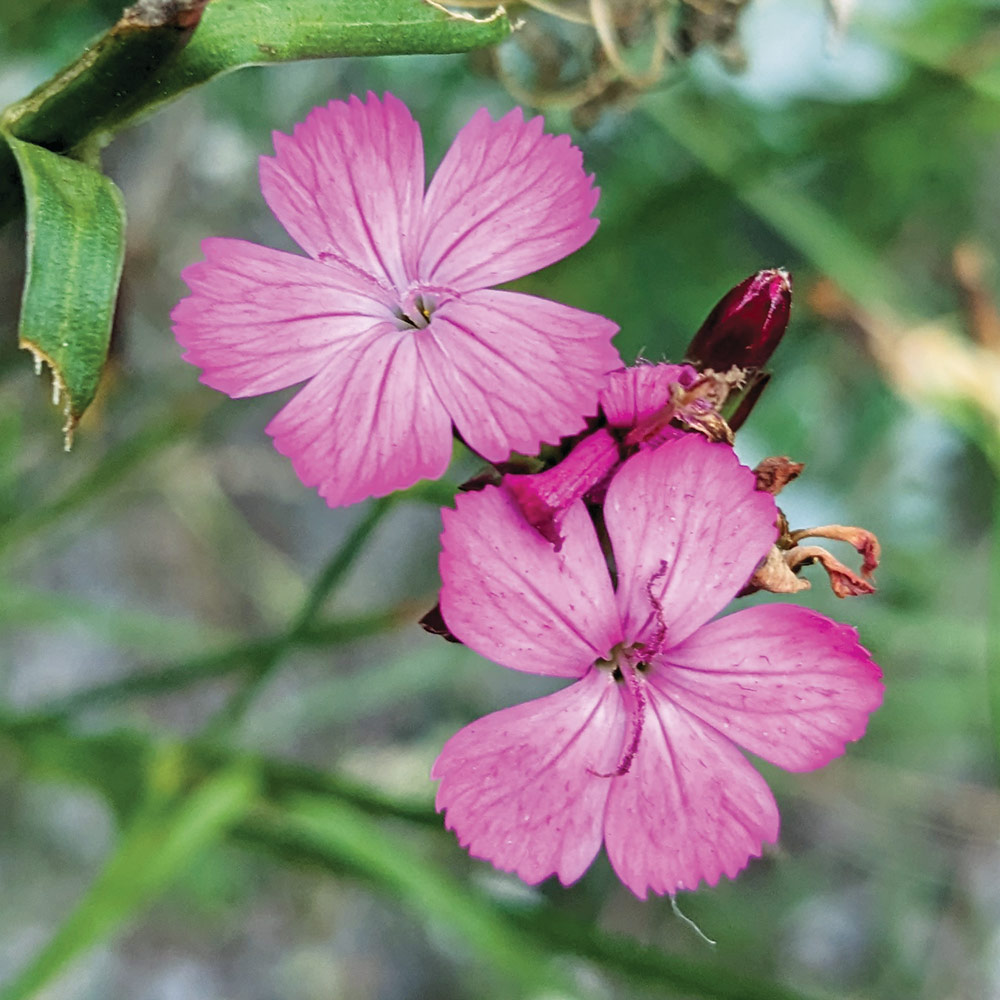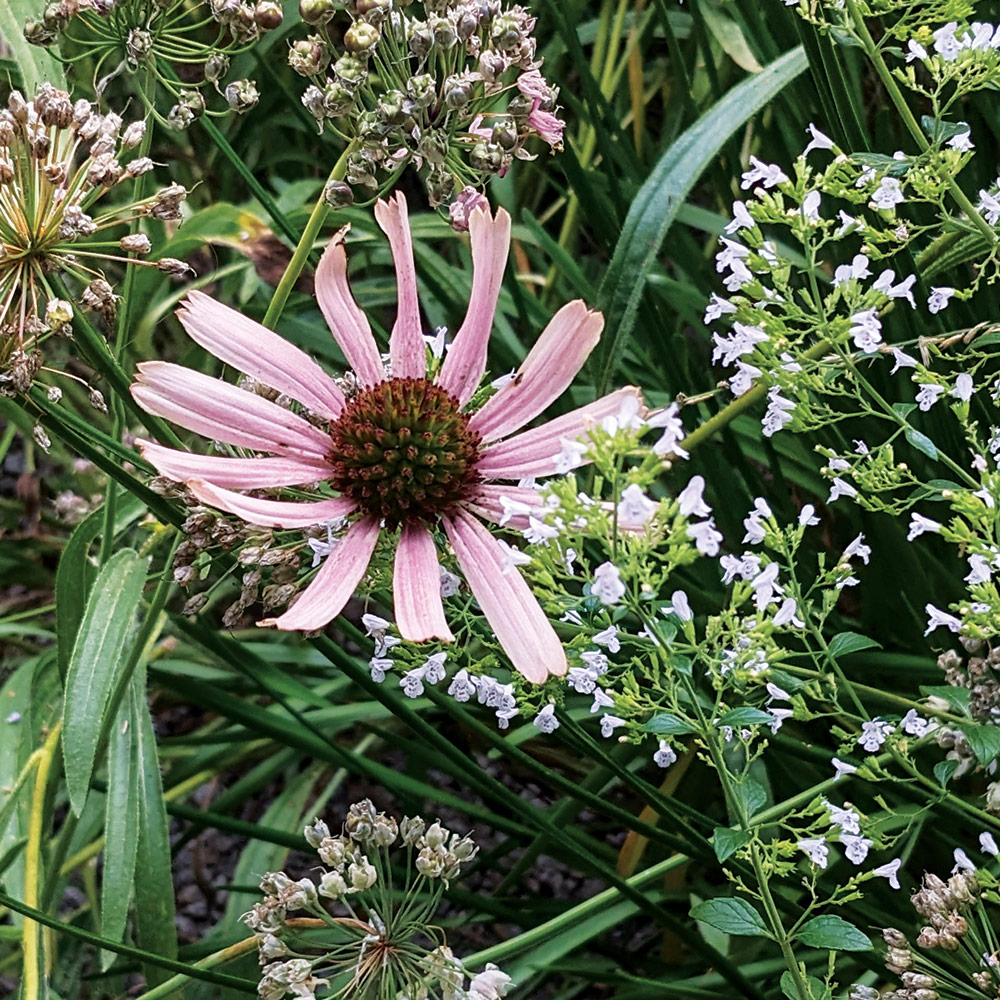When Jeff Epping and his family first moved into their home on a quaint street in Madison, Wisconsin, the front yard was, well, less than stellar—especially for a man whose career was horticulture. “It had a boring patch of bluegrass lawn with ragged foundation plantings typical of many suburban houses,” Jeff says. There were two notable trees, a green ash tree (Fraxinus pennsylvanica, Zones 3–9) that was in decline due to a borer infestation, and a redbud (Cercis cv., Zones 4–9) that never flowered. In short, the house was a family-friendly dream, but the yard was a gardener’s nightmare. Over time, the desire to create a space that was both beneficial to local wildlife and beautiful led to a dramatic transformation: the establishment of a gravel garden buzzing with pollinators.

Designer: Jeff Epping
What: Gravel garden with shady seating area Size: 2,240 square feet total
Zone: 4b–5
Conditions: Full sun to partial shade; average, well-drained soil
Age: Original Garden: 19 years old
Walkway, porch, and driveway: 15 years old
Gravel garden: 6 years old
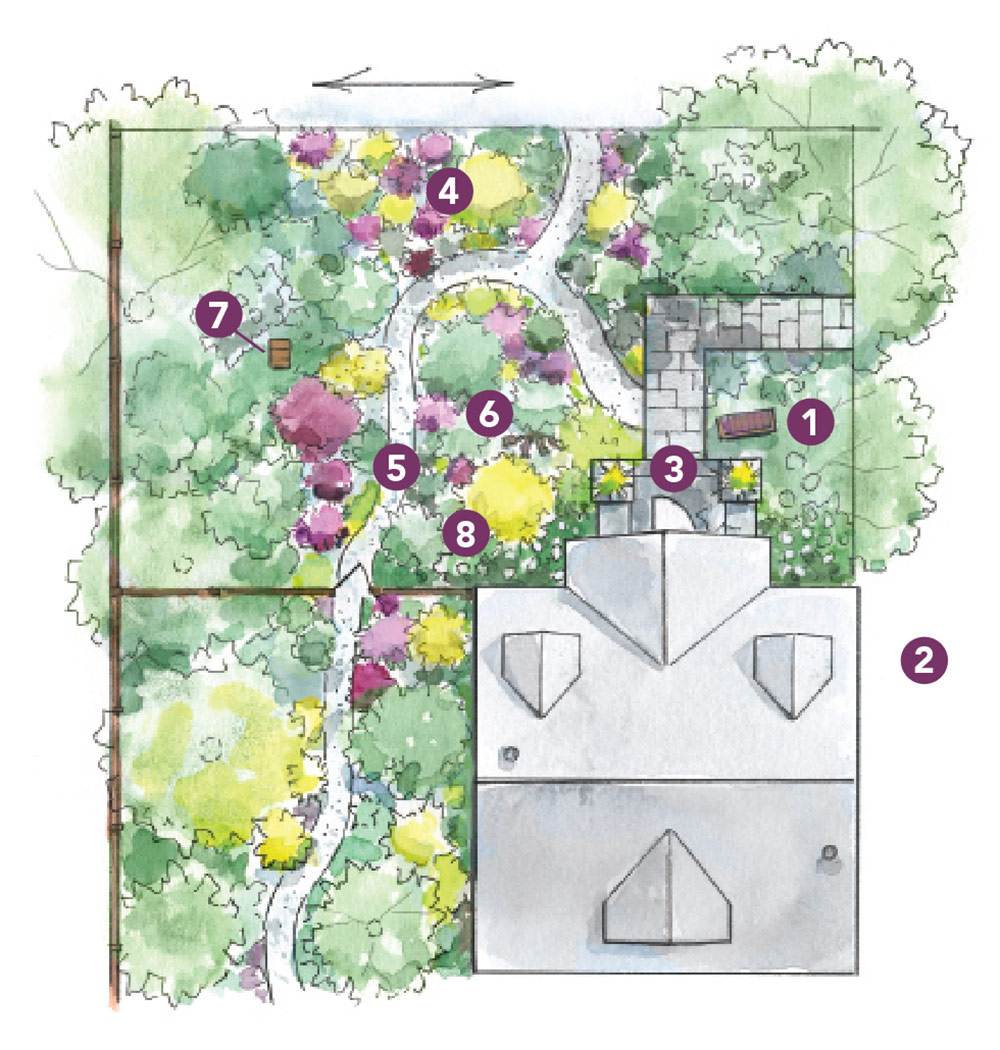
- Shady seating area
- Driveway
- Front entry steps/pillars
- Gravel garden
- Meandering path
- Metal statue
- Pollinator house
- ‘Golden Shadow’ paper mulberry
Develop a vision beyond grass
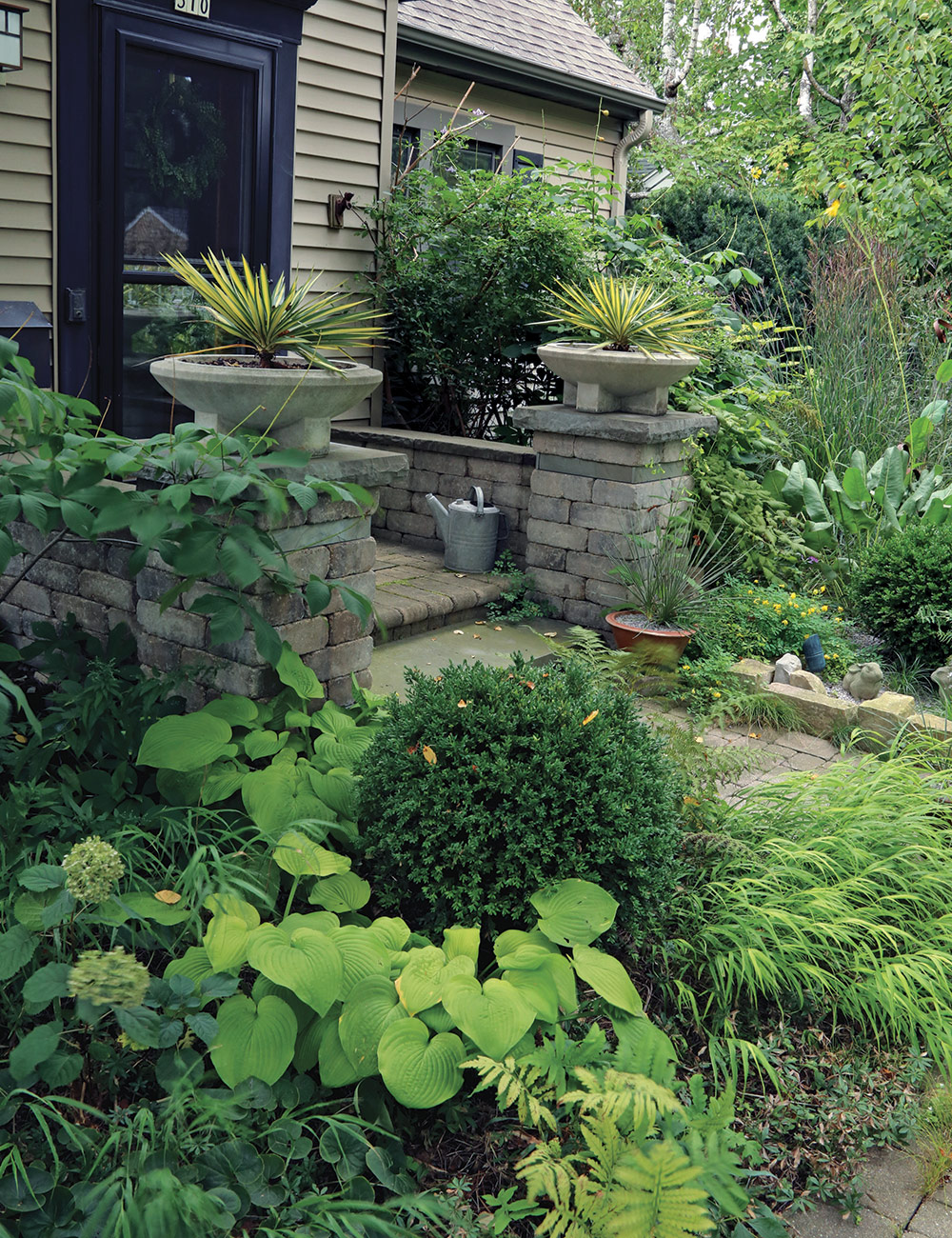
After removing the turf and cutting down the trees that were diseased and underperforming, Jeff planted a few stately specimens to give the front entry structure and interest. Chinkapin oak (Quercus muehlenbergii, Zones 3–9), Japanese katsura (Cercidiphyllum japonicum, Zones 4–8), and Constellation® dogwood (Cornus ‘Rutcan’, Zones 5–8) along with shrubs such as oakleaf hydrangeas (Hydrangea quercifolia, Zones 5–9) and Carolina allspice (Calycanthus floridus, Zones 4–9) quickly established a more varied and interesting garden. Mixed perennial borders provided added seasonal interest and habitat. But by 2017 Jeff felt that the front garden, while low-maintenance, still fell short of the ecological potential he initially envisioned.
A city infrastructure project in 2018 provided an opportunity for change when much of the Eppings’ front yard was disturbed during construction. Inspired by the numerous ecological benefits of gravel gardens, Jeff and his family replaced the remaining lawn with gravel and planted a matrix of drought-tolerant pollinator plants. This approach not only reduced the need for watering and mowing but also created an environment where a greater diversity of plants could thrive. “The neighbors did think I was completely out of my mind when a giant truck arrived and dumped tons of stone on our front yard,” Jeff says, “but they’ve come around.”
Connect the house and garden
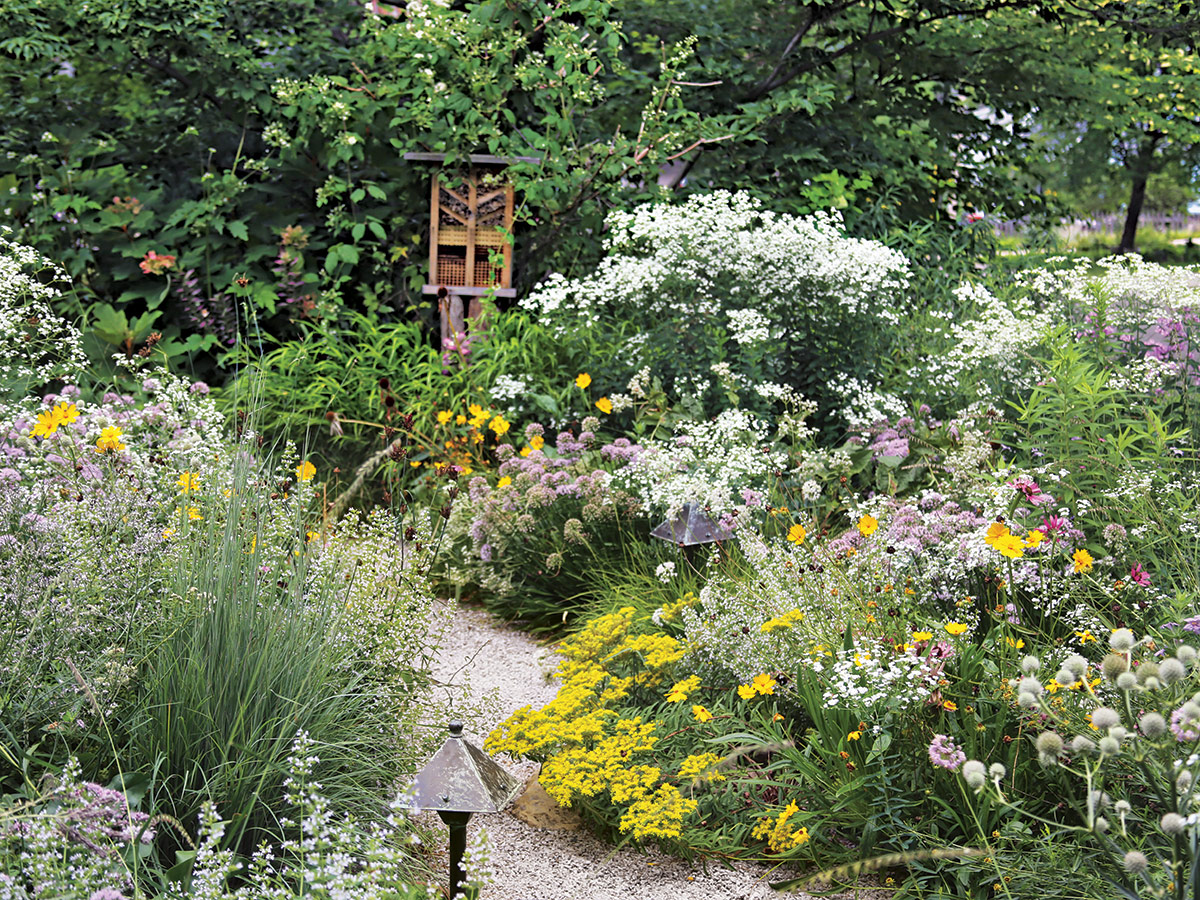
Although the gravel garden area is only 840 square feet, Jeff did feel it was important to add a meandering path through it that connects visitors to the front entry and side gate leading to the backyard. Along the walkway edges are a plethora of pollinator-friendly species that evolve with the seasons, offering nectar, seeds, and shelter year-round. A few strategically placed shrubs and trees, including a striking ‘Golden Shadow’ paper mulberry (Broussonetia papyrifera ‘Golden Shadow,’ Zones 6–9) provide structure and keep the beds from looking too messy. “People are drawn from the street into the garden to see what’s buzzing or flying around—it’s very interactive,” Jeff says.
The front design goes a few steps further to ensure a harmonious relationship between the home and its new garden, too. The L-shaped concrete sidewalk was replaced with a permeable brick paver walkway, framed by pillars and bluestone steps to clearly highlight where to enter and exit the home. A small seating area off the driveway offers a welcoming entry point, complete with teak furniture and elegant planters. “I even added a stone griffin statue when a friend of mine gave me a deal on it. I’m not all that big on sculptures, but my oldest son’s name is Griffin, so I just had to buy it,” Jeff says. These elements, along with metal sculptures and a pollinator house in the gravel garden, tie the hardscape and plantings together, making the space inviting yet functional.
Embrace challenges and adaptations

Transforming this postage-stamp front yard into a vibrant haven for pollinators wasn’t without its challenges. Some of the newer trees are struggling due to increasing shade and climate stresses, prompting Jeff to consider replacing them with smaller trees or shrubs better suited to the conditions. But these setbacks are met with resilience and an eye for improvement. This space demonstrates how thoughtful design can transform a conventional suburban yard into a vibrant, sustainable habitat. It provides curb appeal, reduces maintenance, and supports a thriving ecosystem—all while reflecting the Eppings’ passion for gardening and commitment to ecological stewardship. With its mix of practical pathways, artistic touches, and life-supporting plantings, this garden serves as an inspiring model for anyone looking to rethink their front yard.
Great Pollinator Plants for Seasonal Drama
These are a few of the plants that Jeff relies on for interest during peak times in his front garden.
1. Calamint
Calamintha nepeta subsp. nepeta
Zones: 5–7
Size: 1 to 2 feet tall and wide
Conditions: Full sun; well-drained soil
Native range: Southern Europe to Great Britain
2. Lanceleaf coreopsis

Coreopsis lanceolata
Zones: 4–9
Size: 1 to 2 feet tall and wide
Conditions: Full sun; dry, well-drained soil
Native range: North America
3. Carthusian pink
Dianthus carthusianorum
Zones: 5–9
Size: 2 to 3 feet tall and 1 to 2 feet wide
Conditions: Full sun; well-drained soil
Native range: Europe
4. Tennessee coneflower
Echinacea tennesseensis
Zones: 5–7
Size: 1 to 2 feet tall and wide
Conditions: Full sun; well-drained soil
Native range: Southeast United States
5. Little bluestem

Schizachyrium scoparium and cvs.
Zones: 3–9
Size: 2 to 4 feet tall and 1 to 2 feet wide (depending on cultivar)
Conditions: Full sun; well-drained soil
Native range: North America
Danielle Sherry is the executive editor.
Photos, except where noted: Danielle Sherry
Fine Gardening Recommended Products

isYoung Birdlook® Smart Bird Feeder with Camera
Fine Gardening receives a commission for items purchased through links on this site, including Amazon Associates and other affiliate advertising programs.
Upgraded Dual Granary Bird Feeder. G11 Smart Bird Feeder with Camera – The upgraded dual granary design allows for separate food dispensing, giving birds the freedom to choose while preserving the food’s original taste. With a 2L extra-large capacity, it reduces the need for frequent refills. The drainage design ensures the food stays dry and prevents spoilage from rain. Ideal as a camera bird feeder for birdwatching enthusiasts. 2K HD Camera & Close-Up Bird Watching. Experience clear bird watching with the G11 smart bird feeder. This bird feeder with camera features a 170-degree wide-angle lens and a 1296P HD camera, ensuring vibrant images and videos. With AI-powered recognition, it can identify over 16,000 bird species (subscription required, first month free) and provides extensive birding knowledge. Its unique design helps attract more birds to your backyard. App Alerts & Super Night Vision. The smart bird feeder camera detects motion within 0.5 seconds and sends instant notifications through the “VicoHome” app. With a 2.4G Wi-Fi connection, you can view real-time updates on bird activity right from your app. The video bird feeder also features night vision, ensuring vibrant images and videos even in low light conditions. Ideal for wild bird feeders, this advanced functionality enhances your bird-watching experience day and night.
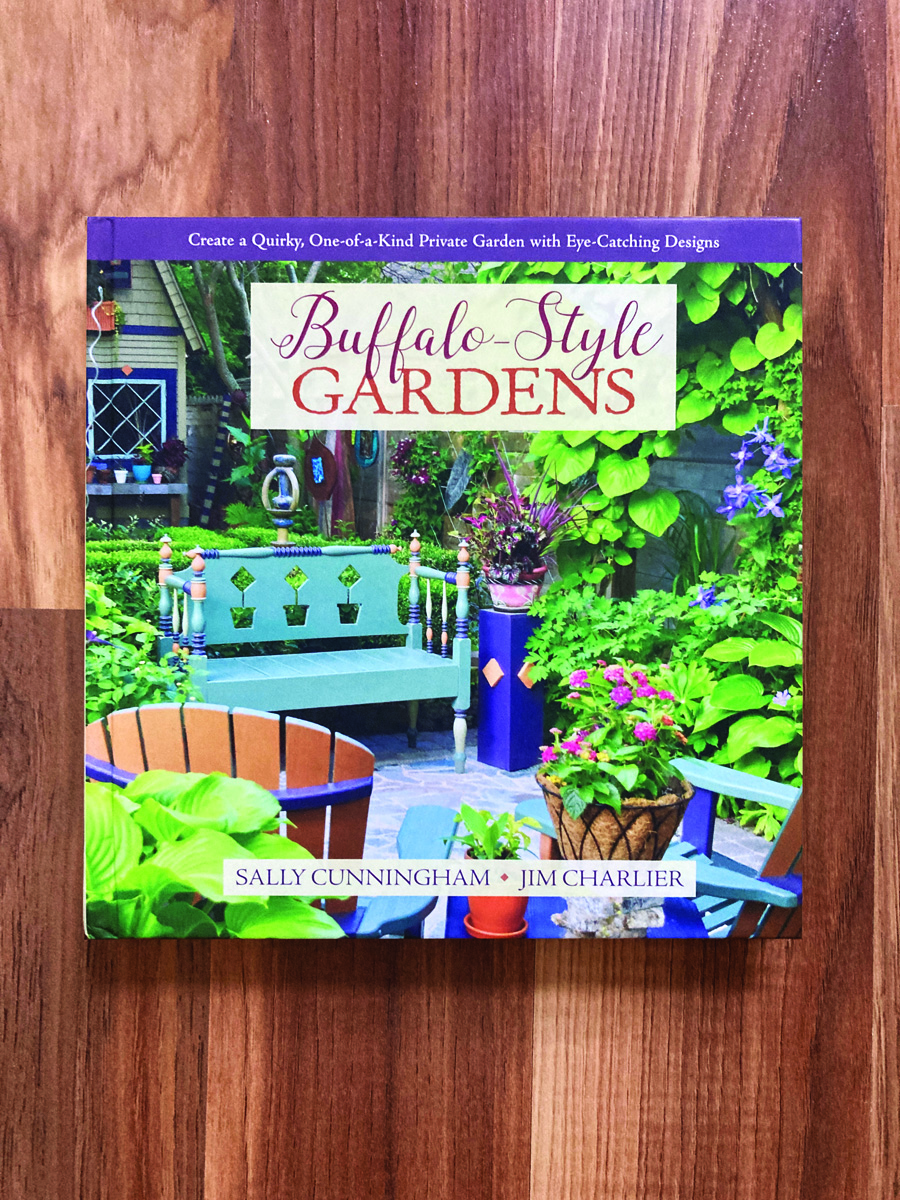
Buffalo-Style Gardens: Create a Quirky, One-of-a-Kind Private Garden with Eye-Catching Designs
Fine Gardening receives a commission for items purchased through links on this site, including Amazon Associates and other affiliate advertising programs.
Buffalo-Style Gardens is a one-of-a-kind, offbeat garden design book that showcases the wildly inventive gardens and gardeners of Buffalo – and offers readers “the best of the best” ideas to use in their own small-space gardens.
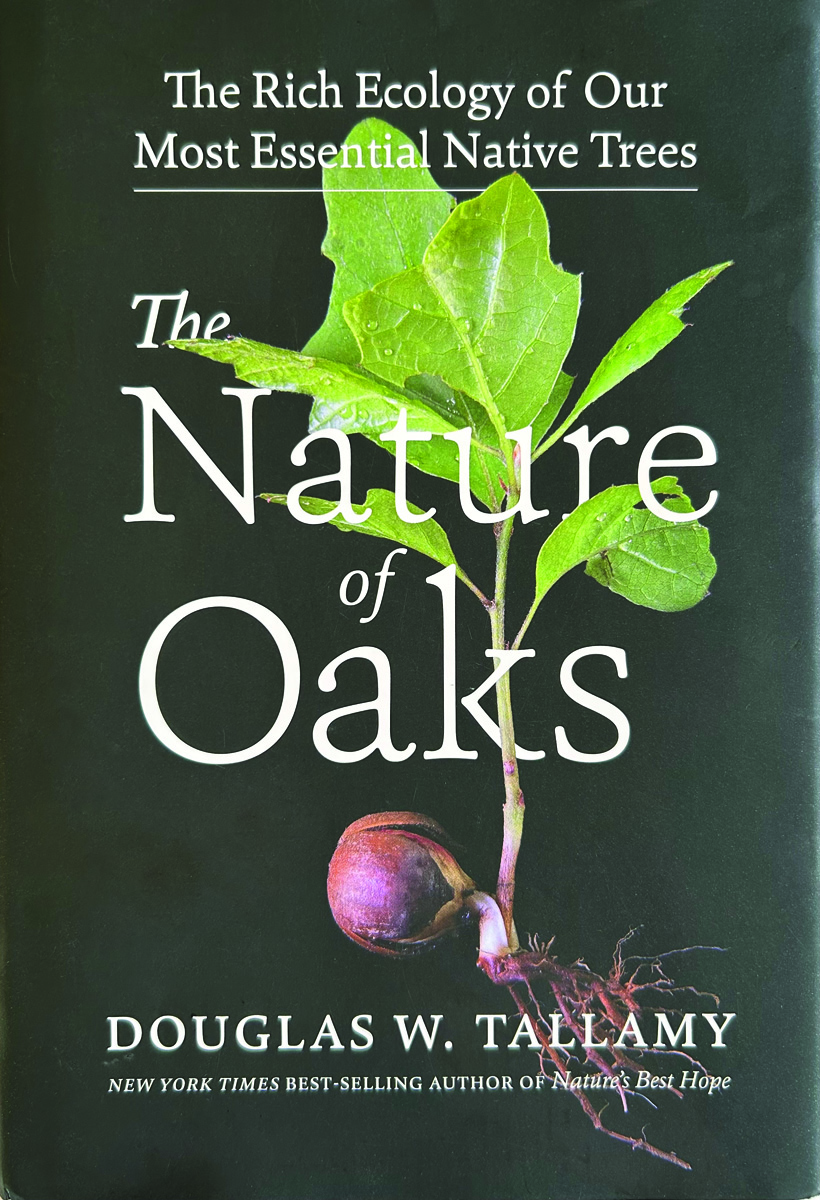
The Nature of Oaks: The Rich Ecology of Our Most Essential Native Trees
Fine Gardening receives a commission for items purchased through links on this site, including Amazon Associates and other affiliate advertising programs.
The Nature of Oaks reveals what is going on in oak trees month by month, highlighting the seasonal cycles of life, death, and renewal. From woodpeckers who collect and store hundreds of acorns for sustenance to the beauty of jewel caterpillars, Doug Tallamy illuminates and celebrates the wonders that occur right in our own backyards. He also shares practical advice about how to plant and care for an oak, along with information about the best oak species for your area.

